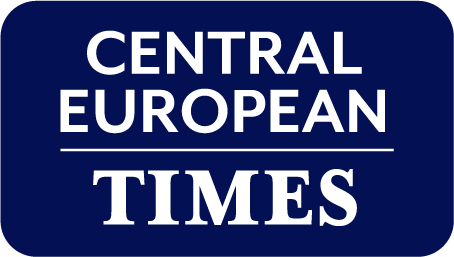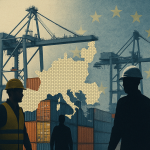CEE economies tougher than you may think – ING
Reading Time: 3 minutesDespite their export-driven economies and strong manufacturing bases, Central and Eastern Europe (CEE) countries may be more resilient to global trade tensions from US tariff policies, than previously assumed, ING bank writes in a new report.
Economies have shown resilience – ING
While CEE’s close ties with Germany and the EU suggest potential vulnerability, several factors contribute to a more nuanced outlook, according to the Dutch multinational banking and financial services corporation.
CEE countries’ direct and indirect exposure to the US market is relatively limited, ING writes, adding that the region primarily trades inside the EU. Even within global value chains, Germany is less integrated than expected, something which challenges assumptions about the region’s susceptibility to US tariffs.
“Trade openness suggests vulnerability to external shocks, but integration in the global value chain is a more accurate measure. Surprisingly, Germany is the least integrated, so claims of high vulnerability due to EU and German exposure should be viewed sceptically,” ING writes.
In a worst-case scenario, euro area real GDP could fall significantly due to tariffs, but ING does not deem this ruinous. “There are various estimates of how much tariffs could reduce growth in the euro area. In a worst-case scenario, real GDP could be 3% lower by 2027, reducing annual growth from 3% to 2%. This is significant, but it isn’t catastrophic, as economies have shown resilience following shocks such as the Covid pandemic and the war in Ukraine,” the report highlights.
Poland, Hungary expect growth
While automotive and electronics are vulnerable to global supply chain disruptions and tariff impacts, the region is witnessing a strategic pivot. Poland is emerging as a key player in the electric vehicle supply chain, attracting major battery manufacturers and positioning itself as a hub for sustainable automotive production.
ING projects that Poland will lead the region with an anticipated GDP growth exceeding 3% in 2025, driven by robust private consumption and significant public investments funded by unfrozen EU Recovery and Resilience Facility grants and loans.
Hungary’s economy is expected to grow by approximately 1.9%, with growth supported by the commencement of production at new automotive plants established by China’s BYD and Germany’s BMW in the latter half of the year. Czechia is also poised for solid expansion, underpinned by strong household consumption and a resilient export sector.
Auto, electronics, pharma amongst vulnerable sectors
CEE sectors such as automobiles and electronics are sensitive to global business cycles, making them less resilient. Hungary could be more exposed in the electrical equipment sector due to its significant industrial production. However, overall, CEE is sufficiently diversified, lowering the risk of widespread economic disruption.
The ING report states: “The CEE region isn’t particularly vulnerable, with sufficient diversification apart from a few outliers. Hungary and (Czechia) are the most exposed to US demand, while Croatia’s pharmaceutical industry is also concentrated on external demand.”
EU funding, Chinese FDI, bilateral deals could mitigate tariff effect
Central banks in CEE are adopting accommodative monetary policies to cushion their economies against external shocks. The European Central Bank has reduced its main interest rate to 2.25%, marking its third rate cut in 2025, aiming to stimulate economic activity amid slowing growth and trade uncertainties. National central banks are also adjusting their policies accordingly, with Poland’s National Bank considering rate cuts to support domestic demand.
Meanwhile the EU is actively pursuing new trade agreements and renewing existing ones, which could open alternative markets and reduce reliance on traditional partners. Meanwhile, CEE countries are attracting increasing Chinese foreign direct investment (FDI), particularly as gateways to the European market. While still lower than in Western Europe, this trend indicates growth potential and strategic importance.
ING writes that “US-EU tariff tensions pose a threat to the export-driven economies of Central and Eastern Europe, but we believe growing Chinese investment and the waning of US exceptionalism present opportunities.”
Other solutions include bilateral deals with the US and EU funding. Some CEE nations are negotiating individual agreements with the US in areas such as energy and defence, aiming to mitigate tariff impacts through diversified partnerships. EU programmes such as the Recovery and Resilience Facility and REPowerEU have bolstered available funds, supporting investments that could offset export losses and present opportunities for economic strengthening.

